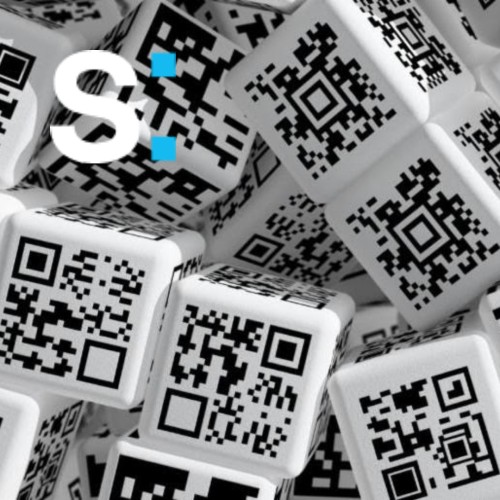Dr. Justin Picard, CTO, and co-founder of Scantrust, recently wrote an article for The Brand Protection Professional (BPP), a Practitioner’s Journal dedicated to reporting news on brand protection operations and the research therein. The article explained how QR codes can be used for Digital Engagement, Anti-Counterfeiting, and Supply Chain Management.
Using QR codes for Digital Engagement, Anti-Counterfeiting, and Supply Chain Management
QR codes are a great tool to help SMEs with their operations. This article explains how QR codes can be used in Digital Engagement, tackling counterfeit products and managing Supply Chain Operations.

Dr. Picard explains that SMEs in the e-commerce product business are almost guaranteed to experience problems with counterfeiting. In Europe, a whopping one in four SMEs has suffered from IP infringement. While counterfeit products are typical of inferior quality and materials, their packaging tends to be high quality and hard to spot. Sales volumes continue to show a shift to more online shopping. That makes instances of encountering a product that has been faked increasingly more common. Since the packaging itself often doesn’t reveal the problem, buyers usually won’t find out until it’s too late.
Qr Codes as an Anti-Counterfeiting tool
One effective way to combat counterfeits is to assess the authenticity of products at several points along the supply chain. Spot checks along the way can be used to determine if a product is genuine even before the product is received by distributors. The European Union Intellectual Property Office (EUIPO) recently outlined 50 technologies in the EUIPO Anti-counterfeiting Technology Report 2021. You can also find our own summary of the report here. Of the 50 technologies reviewed, QR codes stand out due to their potential and suitability in addressing the counterfeiting challenges experienced by SMEs. QR code versatility, recognition among consumers, and relative ease of integration make them an ideal tag to power connected packaging-driven anti-counterfeit efforts.
Despite their suitability for Digital Customer Engagement, standard QR codes alone cannot perform in an anti-counterfeiting capacity. When they are paired with technologies like serialization or copy detection patterns, they are transformed into formidable tools to check authenticity via a smartphone scan. QR codes embedded with security elements make it possible to protect against counterfeits by taking advantage of natural properties that are intrinsic to prin
More QR Code uses
Modified QR codes are already being used to go far beyond addressing illicit counterfeiting activities too. Businesses like Unilever, Dupont, and Syngenta also use QR codes and connected packaging to engage their customers and even resellers through Digital Engagement campaigns. Even a simple association of a unique identity to each product using serialized QR codes allows for storing the traceability history of each product and creating focused and customized individual interactions. QR code scans also offer an increased level of supply chain visibility, especially with serialized, unique QR codes.
While QR codes combined with a security element are an effective anti-counterfeiting technology, RFID and NFC tags are also useful in some applications for the same, albeit at a different price point and with their distinct implementation challenges and processes.
QR Codes Integration on Products: Connected Packaging
Improving business with connected packaging requires an investment and understanding of how to integrate with a company’s existing production processes. Especially when printing or packaging companies lack of expertise in digital printing, that can be daunting. The software platforms used to manage unit-level detailed information create a wide range of possibilities for businesses. With the interaction data that is generated from connected packaging, everything from the ability to create customized landing pages with dynamic data to logistics and inventory management using parent-child associations becomes possible. Imagine targeting your social media advertising based on the geo-location of product interactions recorded as QR scans on your products: this is what Scantrust customers are already doing now.
Until recently, connected packaging benefits were really the realm of technology that was available to larger enterprises with bigger production volumes, bigger client bases, and bigger budgets. Fortunately, connected packaging benefits have become available even for start-ups that depend on being able to introduce and iterate their products with lower production volumes and more restrictive budgets. ePacConnect launched a connected, flexible packaging service in mid-2021 that offers connected packaging benefits, including an anti-counterfeiting solution to smaller businesses as well as to large enterprises. Variable data printing alone makes this offering very attractive to companies that are either just discovering the advantage of unit-level data from connected packaging or those companies that are already using connected packaging but are looking for ways to improve without the traditional restrictions, such as restrictive minimum order volumes. Costs are constantly managed by any savvy business, so new connected packaging technology providers like ePacConnect are already offering competitive prices or offering no-cost implementations for basic connected packaging benefits.
Qr codes for business activities, is it worth it?
It’s clear that counterfeit goods are a substantial problem for SMEs that isn’t going away. To tackle this problem, the latest technology and connected packaging processes using QR codes and other IoT tags are already being used by multi-national companies as an effective anti-counterfeiting tool. What’s more, is many brands using QR codes are also using this technology to enhance digital engagement with customers and resellers and manage their supply chain. Connected packaging can be described as the future of managing supply chain complexity. While that is true, it’s also a very staid and limiting description. Connected packaging is really the opportunity for businesses to do so much more with the products that they already depend on selling. Whether it’s to manage supply chain complexity, find a better and more cost-effective way to manage social media and other engagement, or give end consumers peace of mind about whether or not they bought a genuine product, the time for companies to start using connected packaging to their advantage or to improve on their current efforts has never been better.